| |
|
|
| |
How to stay safe wading the Tongariro.
Sat 8th December, 2012
|
|
|
|
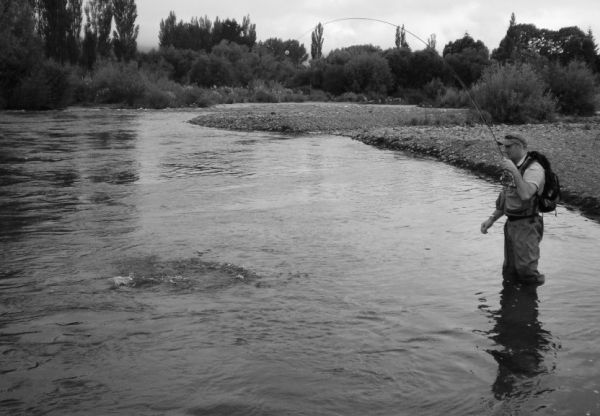
WADING TIPS FOR US OLDER ANGLERS
The Tongariro has plenty of excellent access and although you don't have to stand up to your armpits in the middle of the river to catch fish there are occasions when we have to wade.
The "young guns" on the river often extract the urine out of us old fellas especially where wading is concerned. But that clock starts ticking as soon as we take our first breath and its a fact none of us get younger. Sooner or later those situations that we didn't think twice about a few years ago suddenly become a little more tricky. Below are some things we can do to stay safe and dry.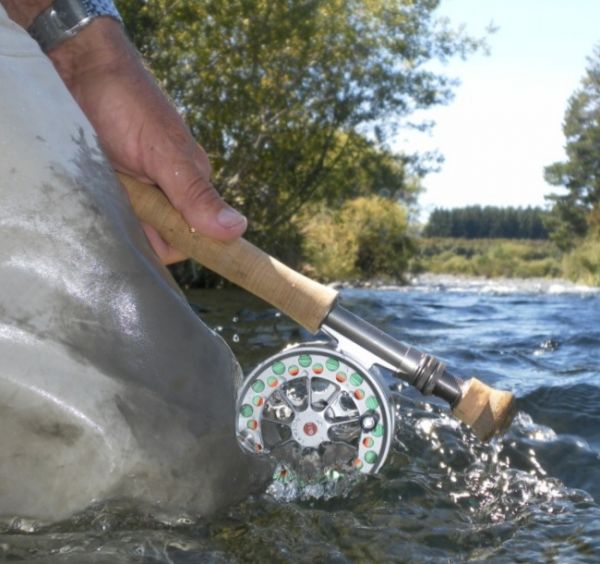
WEAR A BELT
A wading belt is one of the simplest things you can use to help keep you safe while negotiating your way around a river. It traps air inside your waders and contrary to the popular urban myth, if you fall in, you won't up end and drown. When was the last time you saw a pair of upside down wading boots float past with a hapless angler hanging underneath? More importantly it helps keep the river out if you take an unexpected dip. Try standing up, even in the shallows, with your waders full of water.
AVOID UNNECESSARY WADING
Fish your feet first and then enter the water if you have too. There's less chance of spooking fish if you stay out of the river, especially in deep, clear, slow moving pools.
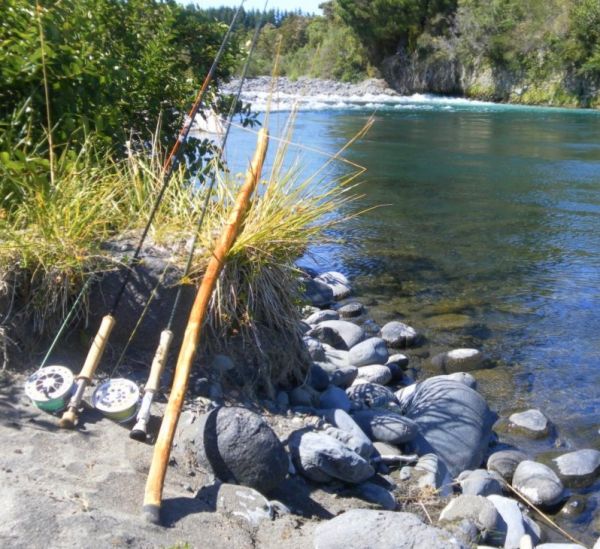 USE A WADING STICK USE A WADING STICK
Nowadays I always carry a good stout wading stick. Even if you're not wading and just walking, the Tongariro has areas along the rivers edge covered with large rocks and boulders. The extra stability a stick provides far outweighs the inconvenience of having to carry it.
Some of mine are quite intricately decorated and I'm always asked where I get them. I have to make a confession here ... they're not carved by an old Maori craftsman ... he's actually a mate of a mate originally from Liverpool !
WEAR POLAROIDS
Eliminating glare ensuring you can see any obstacles below the surface will help you wade safely. Avoid crossing where you can't see the bottom.
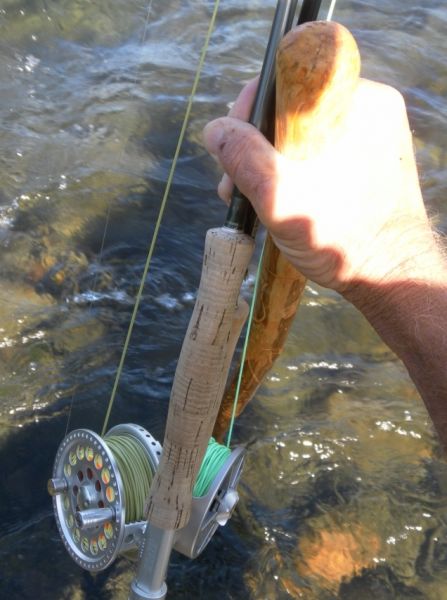
PLAN YOUR ROUTE
Study whats in front of you before you start and workout the safest way across. Check downstream for hazards or particularly fast or turbulent water. If you can't see a safe way out {should you get swept downriver} then it might be wiser to cross elsewhere.
WORK WITH THE RIVER NOT AGAINST IT
Where ever possible cross diagonally at a downstream angle.
BODY POSITION
Cross with most of your body side on to the current and your stick upstream. By leaning into the current using the stick for support you'll expose less of your body to the flow, making it easier to keep your balance as you make your way across.
THE POINT OF NO RETURN
We're all different but in deeper water there eventually comes a time when we become buoyant. To avoid a dunking learn to recognize your point of no return ... before its too late.
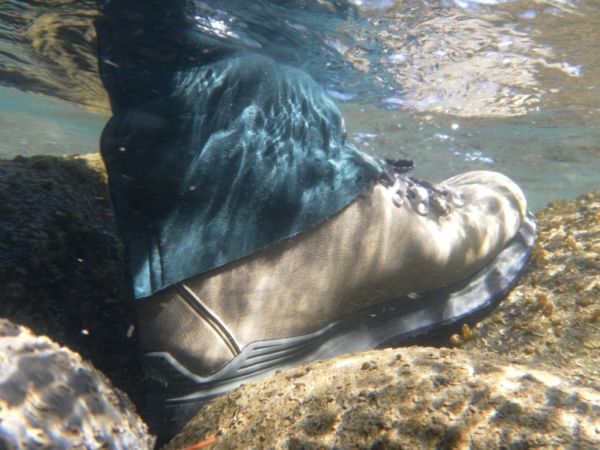
FEEL WITH YOUR FEET
The river bed of the Tongariro is often uneven and covered with smooth slippery rocks of all shapes and sizes.
Use your stick to check for changes in depth and with a wide stance feel your way across with your feet. Some of the rocks will roll underfoot so always make sure you have one foot firmly planted before you transfer weight to take the next step.
WALK BACKWARDS
If you have to retreat its usually safer to edge backwards. Take your time until you get out of the main flow and into shallower water before you attempt to turn around.
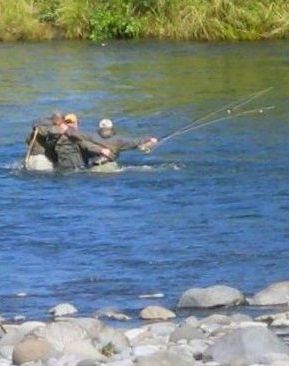
BUDDY UP
Where possible cross with another angler or anglers. By linking arms or holding on to one anothers wading belts its much safer and easier for two or three to cross together than a single person. Position the biggest or more confident angler upstream to break the flow for the others.
IF YOU DO FALL IN
Try not to panic. Roll onto your back with your toes out of the water and your feet pointing downstream.
Concentrate on saving yourself not your tackle.
If you have too, let the rods go and use both arms to help maintain this position as you're carried downstream. Try and keep your feet pointing at any obstacles to protect your head and use your arms like oars to steer around them. Look for slower or shallower water ahead and if its safe to do so point your feet at an angle towards the bank and using your arms " row " ashore and get out of those wet clothes.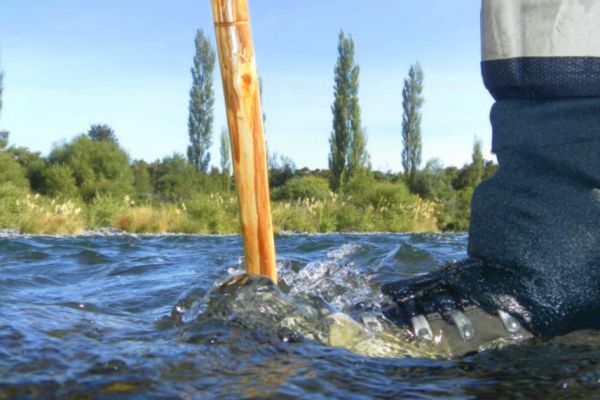 |
|
|
| Back to Top |
|
|
|
|
|
|
|